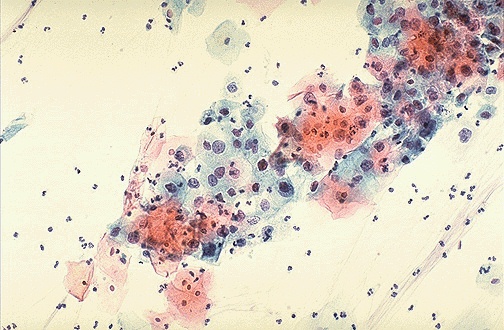



|
This is a Pap smear. The cytologic features of normal squamous epithelial cells can be seen at the center top and bottom, with orange to pale blue plate-like squamous cells that have small pyknotic nuclei. The dysplastic cells in the center extending to upper right are smaller overall with darker, more irregular nuclei. Most squamous epithelial dysplasias and carcinomas are driven by human papillomavirus infection (HPV). In most cases HPV infections are cleared in 8 to 14 months in young, healthy women. However, there can be repeated infection. The HPV E7 protein binds to the hypophosphorylated form of RB, a tumor suppressor gene, which then no longer acts as a cell-cycle inhibitor. The binding is particularly strong for viral subtypes such as HPV 16 and 18, increasing the risk for progression to higher grade dysplasia or carcinoma. Testing for these high-risk subtypes can be carried out. |


 |